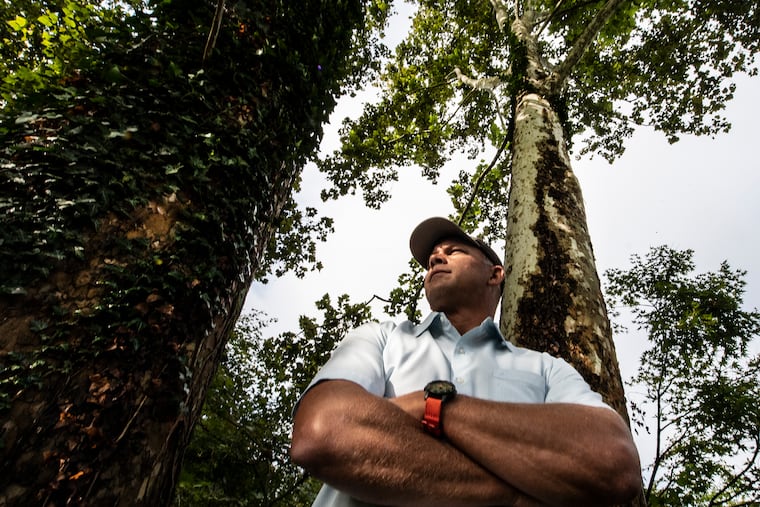Here’s advice from a self-professed tree-hugger and tree detective
John Hosbach Jr. travels all over, from Pennsylvania to Montana. His goal: Study the trees and find what's wrong with them.

His work takes him from Pennsylvania’s marshy lowlands to the dry terrain of Montana, where he works long days chatting with lawyers and writing detailed reports that need to answer the big question: What’s wrong with this tree?
John Hosbach Jr. is, in layman’s terms, a tree detective.
He examines everything from oaks to poplars, digging for root rot and inspecting dead branches. His expertise carries legal gravitas, compelling him to testify in court when people are hurt or killed by felled trees. And as more cities push for more greenery and suburban towns rally to keep neighborhoods as leafy as possible, he’s busier than ever.
“We try to have a good balance between managing the trees and condemning them," said Hosbach, a part-time arborist for Radnor, a town so green that trees and grasses droop onto some roads. “People get really pissed when I start cutting trees or condemning them.”
Not without reason.
Trees — from grand oaks to everyday aspens and prickly pines — are planted by and for loved ones, heralded as memorials, honored as burial grounds, and lauded as connections to history. They’ve inspired literature, architecture, religion, and art, and long been trumpeted as symbols of strength and growth. (“This oak tree and me,” the astronomer Carl Sagan once said, “we’re made of the same stuff.”)
And they can be ripe for lawsuits.
“People don’t think, ‘Hey, I might have a liability here,’” said Hosbach, president of the Ridley Park-based urban forestry company Rockwell Associates, standing near the Radnor Township building on Iven Avenue. He faced a thicket of foliage.
He recalled that eight years ago, just about a mile away from where he stood, a 45-foot tree branch snapped on the Radnor Trail and hit Devon resident Donald Vigliotti as he sat on a bench. Vigliotti, 65, died.
Two months ago, during a light rain, an 83-year-old beech tree that Hosbach had marked as hollow — and therefore unsafe — fell on the empty concession stand at Encke Park, next to the Radnor Township building.
“The roof was crushed,” he said. No one was hurt.
Still, Radnor officials are struggling to routinely check the health of the town’s trees, said Lisa Borowski, chair of the Radnor Board of Commissioners. There are so many trees that would need to be checked, she said, that Radnor needs to allot $2 million for the job.
“We’re kind of in a situation where there’s a lot of trees needing a lot of maintenance,” she said. “We have been told by our staff that tree maintenance that has really been neglected over the years. The funds to do the maintenance — it’s never been adequately funded by the township, by budgets. There are other things that have taken priority.”
Responsibility has fallen to Hosbach, a self-professed tree-hugger.
He walks around backyards and public land, checking trees for decay, dead branches, trunk cracks, cavities, missing bark, and swollen roots. The damage runs so deep in some trees, he says, that recovery is impossible.
“My conclusions are not always welcomed,” he said.
It can be expensive to take down trees. It cost Borowski $10,000 to hire a company to remove two large pine trees in her backyard after they were struck by lightning eight or nine years ago, she said.
“Taking down trees is expensive, and [people] put it off as long as they can," said Rich Widmann, chair of the Lower Merion Shade Tree Commission. “There’s a lot of trees out there that should be taken down.”
Convincing people to do so isn’t always easy.
“People call me and say, ‘Hey, I’m a little concerned about my oak tree,’” Hosbach said. “And at that point, it’s usually a little too late.”